
UX for the Web
¥71.93
Learn how UX and design thinking can make your site stand out from the rest of the internet. About This Book ? Learn everything you need to know about UX for your Web Design. ? Design B2B, B2C websites that stand out from the competitors with this guide ? Enhance your business by improving customer accessibility and retention. Who This Book Is For If you’re a designer, developer, or just someone who has the desire to create websites that are not only beautiful to look at but also easy to use and fully accessible to everyone, including people with special needs, UX for the Web will provide you with the basic building blocks to achieve just that. What You Will Learn ? Discover the fundamentals of UX and the User-Centered Design (UCD) Process. ? Learn how UX can enhance your brand and increase user retention ? Learn how to create the golden thread between your product and the user ? Use reliable UX methodologies to research and analyze data to create an effective UX strategy ? Bring your UX strategy to life with wireframes and prototypes ? Set measurable metrics and conduct user tests to improve digital products ? Incorporate the Web Content Accessibility Guidelines (WCAG) to create accessible digital products In Detail If you want to create web apps that are not only beautiful to look at, but also easy to use and fully accessible to everyone, including people with special needs, this book will provide you with the basic building blocks to achieve just that. The book starts with the basics of UX, the relationship between Human-Centered Design (HCD), Human-Computer Interaction (HCI), and the User-Centered Design (UCD) Process; it gradually takes you through the best practices to create a web app that stands out from your competitors. You’ll also learn how to create an emotional connection with the user to increase user interaction and client retention by different means of communication channels. We’ll guide you through the steps in developing an effective UX strategy through user research and persona creation and how to bring that UX strategy to life with beautiful, yet functional designs that cater for complex features with micro interactions. Practical UX methodologies such as creating a solid Information Architecture (IA), wireframes, and prototypes will be discussed in detail. We’ll also show you how to test your designs with representative users, and ensure that they are usable on different devices, browsers and assistive technologies. Lastly, we’ll focus on making your web app fully accessible from a development and design perspective by taking you through the Web Content Accessibility Guidelines (WCAG). Style and Approach This is an easy-to-understand step-by-step guide with full of examples to that will help you in creating good UX for your web applications.
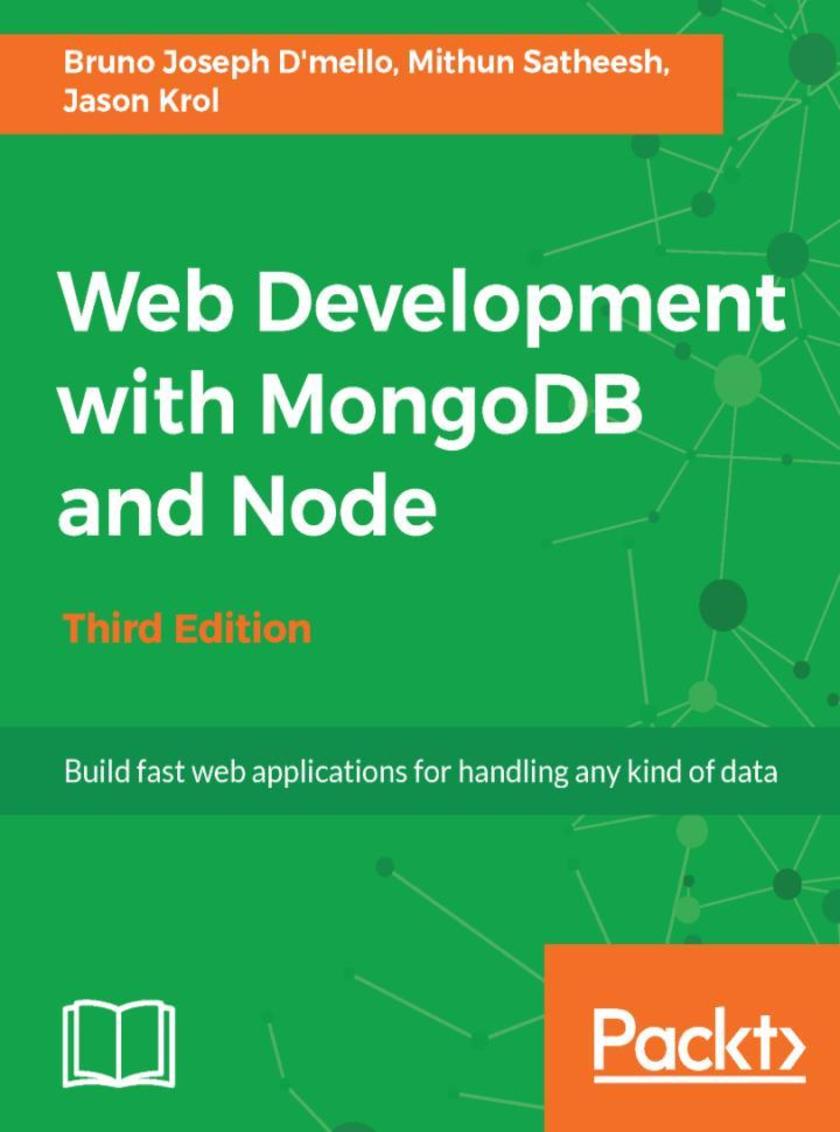
Web Development with MongoDB and Node - Third Edition
¥71.93
Use the two popular web development stacks, Node.js and MongoDB, to build full-featured web applications About This Book ? Learn the new ECMAScript along with Node 8 and MongoDB to make your application more effective. ? Get the up-to-date information required to launch your first application prototype using the latest versions of Node.js and MongoDB. ? A practical guide with clear instructions to designing and developing a complete web application from start to finish using trending frameworks such as angular4 and hapi Who This Book Is For The book is designed for JavaScript developers of any skill level who want to get up-and-running using Node.js and MongoDB to build full-featured web applications. A basic understanding of JavaScript and HTML is the only prerequisite for this book. What You Will Learn ? Work with Node.js building blocks ? Write and configure a web server using Node.js powered by the Express.js framework ? Build dynamic HTML pages using the Handlebars template engine ? Persist application data using MongoDB and Mongoose ODM ? Test your code using automated testing tools such as the Mocha framework ? Automate test cases using Gulp ? Reduce your web development time by integrating third-party tools for web interaction. ? Deploy a development environment to the cloud using services such as Heroku, Amazon Web Services, and Microsoft Azure ? Explore single-page application frameworks to take your web applications to the next level In Detail Node.js builds fast, scalable network applications while MongoDB is the perfect fit as a high-performance, open source NoSQL database solution. The combination of these two technologies offers high performance and scalability and helps in building fast, scalable network applications. Together they provide the power for manage any form of data as well as speed of delivery. This book will help you to get these two technologies working together to build web applications quickly and easily, with effortless deployment to the cloud. You will also learn about angular 4, which consumes pure JSON APOIs from a hapi server. The book begins by setting up your development environment, running you through the steps necessary to get the main application server up-and-running. Then you will see how to use Node.js to connect to a MongoDB database and perform data manipulations. From here on, the book will take you through integration with third-party tools to interact with web apps. You will see how to use controllers and view models to generate reusable code that will reduce development time. Toward the end, the book supplies tests to properly execute your code and take your skills to the next level with the most popular frameworks for developing web applications. By the end of the book, you will have a running web application developed with MongoDB, Node.js, and some of the most powerful and popular frameworks. Style and approach A practical guide with clear instructions to designing and developing a complete web application from start to finish
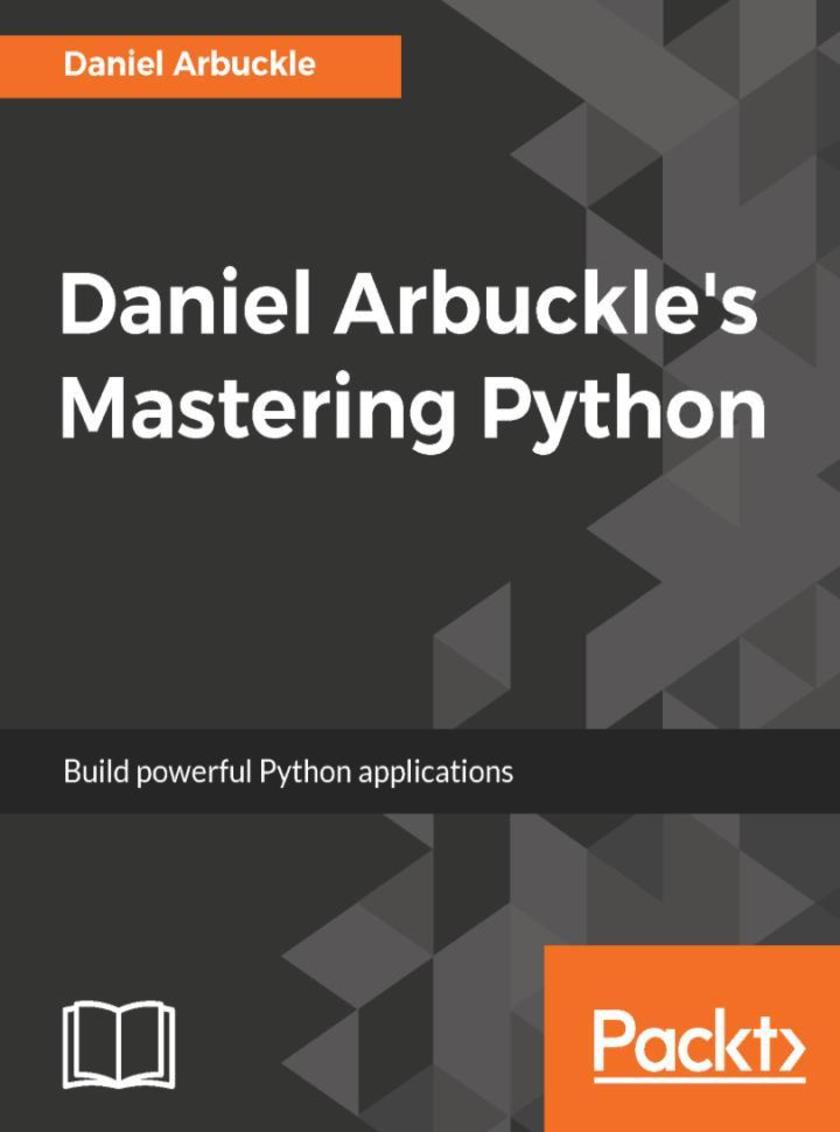
Daniel Arbuckle’s Mastering Python
¥71.93
Gain a thorough understanding of operating in a Python development environment, and some of the most important advanced topics with Daniel Arbuckle. This dynamic, concise book is full of real-world solutions for Python 3.6 problems, and advanced-level concepts such as reactive programming, microservices, ctypes and Cython. About This Book ? Covers the latest and advanced concepts of Python such as parallel processing with Python 3.6 ? Explore the Python language from its basic installation and setup to concepts such as reactive programming and microservices ? Get introduced to the mechanism for rewriting code in a compiled language along with ctypes and Cython tools Who This Book Is For If you are a programmer and are familiar with the basics of Python, and you want to broaden your knowledge base to develop projects better and faster, this book is for you. Even if you are not familiar with Python, Daniel Arbuckle's Mastering Python starts with the basics and takes you on a journey to become an expert in the technology. What You Will Learn ? Get to grips with the basics of operating in a Python development environment ? Build Python packages to efficiently create reusable code ? Become proficient at creating tools and utility programs in Python ? Use the Git version control system to protect your development environment from unwanted changes ? Harness the power of Python to automate other software ? Distribute computational tasks across multiple processors ? Handle high I/O loads with asynchronous I/O to get a smoother performance ? Take advantage of Python's metaprogramming and programmable syntax features ? Get acquainted with the concepts behind reactive programming and RxPy In Detail Daniel Arbuckle's Mastering Python covers the basics of operating in a Python development environment, before moving on to more advanced topics. Daniel presents you with real-world solutions to Python 3.6 and advanced-level concepts, such as reactive programming, microservices, ctypes, and Cython tools. You don't need to be familiar with the Python language to use this book, as Daniel starts with a Python primer. Throughout, Daniel highlights the major aspects of managing your Python development environment, shows you how to handle parallel computation, and helps you to master asynchronous I/O with Python 3.6 to improve performance. Finally, Daniel will teach you the secrets of metaprogramming and unit testing in Python, helping you acquire the perfect skillset to be a Python expert. Daniel will get you up to speed on everything from basic programming practices to high-end tools and techniques, things that will help set you apart as a successful Python programmer. Style and Approach Daniel Arbuckle's Mastering Python covers basic to advanced-level concepts in computer science. If you are a beginner, then Daniel will help you get started. If you are experienced, he will expand your knowledge base.
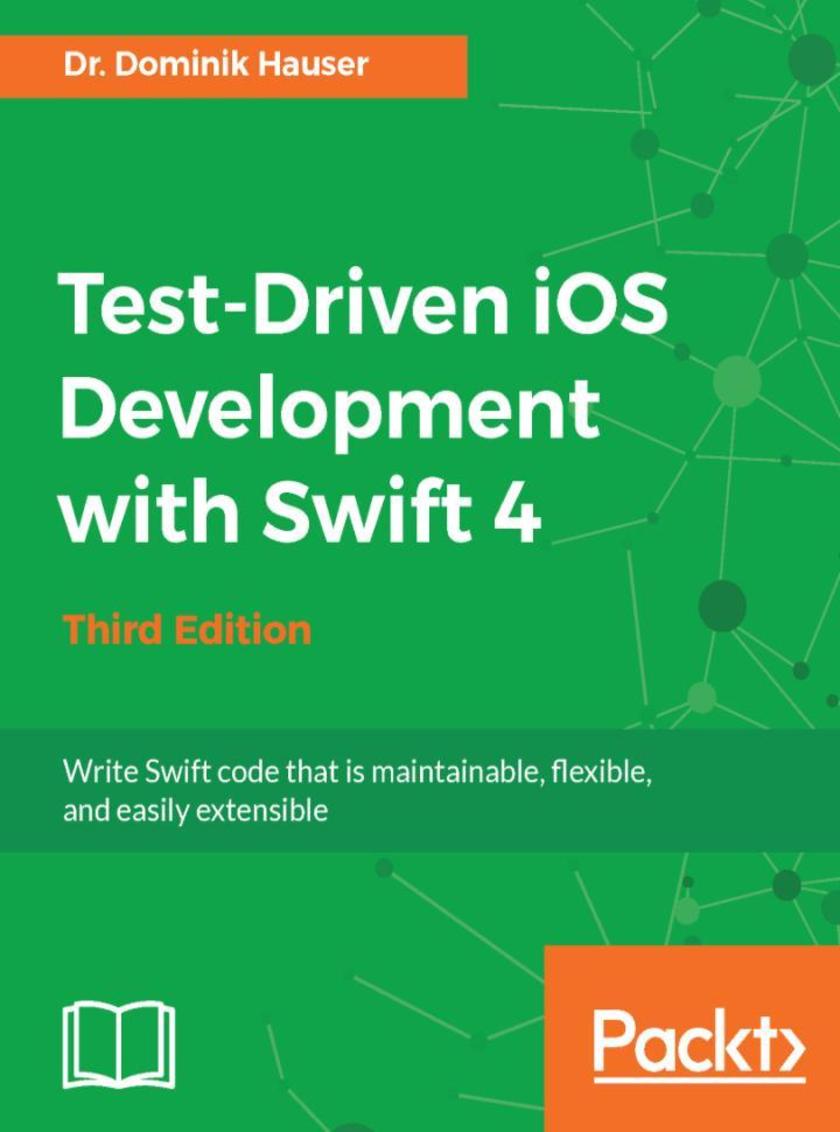
Test-Driven iOS Development with Swift 4 - Third Edition
¥71.93
Use test-driven approach to develop highly-functional iOS apps with Swift 4 and Xcode 9 About This Book ? A practical guide to writing effective, organized, and clean code that works well ? Learn test-driven principles to help you build better-designed apps with fewer bugs ? A comprehensive overview of the techniques available for TDD in Swift Who This Book Is For To get the most out of this book, you will need some prior experience with Swift application development. You may have already heard about Test-Driven Development (TDD) but you don't need any prior experience of applying it to Swift applications. What You Will Learn ? Implement TDD in Swift application development ? Find bugs before you enter code using the TDD approach ? Use TDD to build models, view controllers, and views ? Test network code with asynchronous tests and stubs ? Write code that is a joy to read and maintain ? Develop functional tests to ensure the app works as planned In Detail Test-driven development (TDD) is a proven way to find software bugs early. Writing tests before you code improves the structure and maintainability of your apps. Using TDD, in combination with Swift 4's improved syntax, means there is no longer any excuse for writing bad code. This book will help you understand the process of TDD and how to apply it to your apps written in Swift. Through practical, real-world examples, you’ll learn how to implement TDD in context. You will begin with an overview of the TDD workflow and then delve into unit-testing concepts and code cycles. You will also plan and structure your test-driven iOS app, and write tests to drive the development of view controllers and helper classes. Next, you’ll learn how to write tests for network code and explore how the test-driven approach—in combination with stubs—helps you write network code even before the backend component is finished. Finally, the book will guide you through the next steps to becoming a testing expert by discussing integration tests, Behavior Driven Development (BDD), open source testing frameworks, and UI Tests (introduced in Xcode 9). Style and approach Using a step-by-step approach, you will develop an entire iOS app using TDD. During the course of the book, you will explore different strategies for writing tests for models, View Controllers, and networking code.
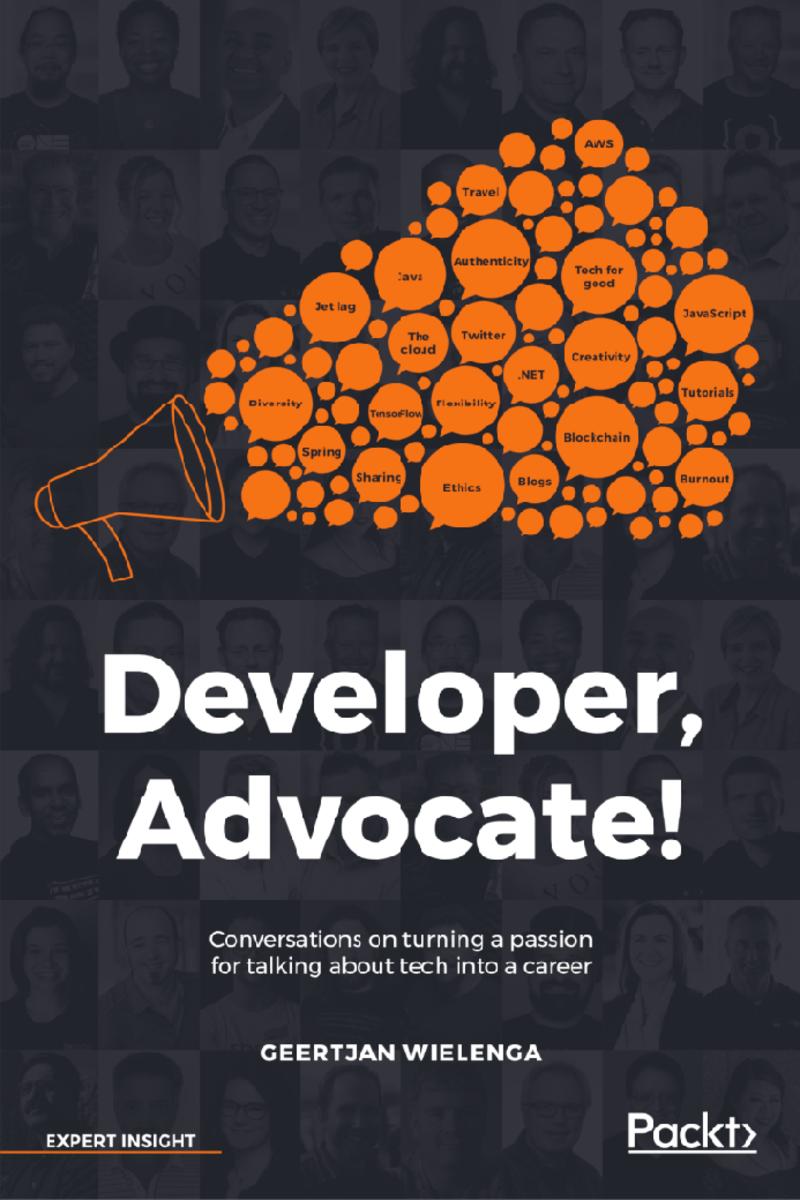
Developer, Advocate!
¥71.93
A collection of in-depth conversations with leading developer advocates that reveal the world of developer relations today Key Features * Top developer advocates reveal the work they’re doing at the center of their tech communities and the impact their advocacy is having on the tech industry as a whole * Discover the best practices of developer advocacy and get the inside story on working at some of the world’s largest tech companies * Features contributions from noted developer advocates, including Scott Hanselman, Sally Eaves, Venkat Subramaniam, Jono Bacon, Ted Neward, and more Book Description What exactly is a developer advocate, and how do they connect developers and companies around the world? Why is the area of developer relations set to explode? Can anybody with a passion for tech become a developer advocate? What are the keys to success on a global scale? How does a developer advocate maintain authenticity when balancing the needs of their company and their tech community? What are the hot topics in areas including Java, JavaScript, "tech for good," artificial intelligence, blockchain, the cloud, and open source? These are just a few of the questions addressed by developer advocate and author Geertjan Wielenga in Developer, Advocate!. 32 of the industry's most prominent developer advocates, from companies including Oracle, Microsoft, Google, and Amazon, open up about what it's like to turn a lifelong passion for knowledge sharing about tech into a rewarding career. These advocates run the gamut from working at large software vendors to small start-ups, along with independent developer advocates who work within organizations or for themselves. In Developer, Advocate!, readers will see how developer advocates are actively changing the world, not only for developers, but for individuals and companies navigating the fast-changing tech landscape. More importantly, Developer, Advocate! serves as a rallying cry to inspire and motivate tech enthusiasts and burgeoning developer advocates to get started and take their first steps within their tech community. What you will learn * Discover how developer advocates are putting developer interests at the heart of the software industry in companies including Microsoft and Google * Gain the confidence to use your voice in the tech community * Immerse yourself in developer advocacy techniques * Understand and overcome the challenges and obstacles facing developer advocates today * Hear predictions from the people at the cutting edge of tech * Explore your career options in developer advocacy Who this book is for Anybody interested in developer advocacy, the impact it is having, and how to build developer advocacy capabilities
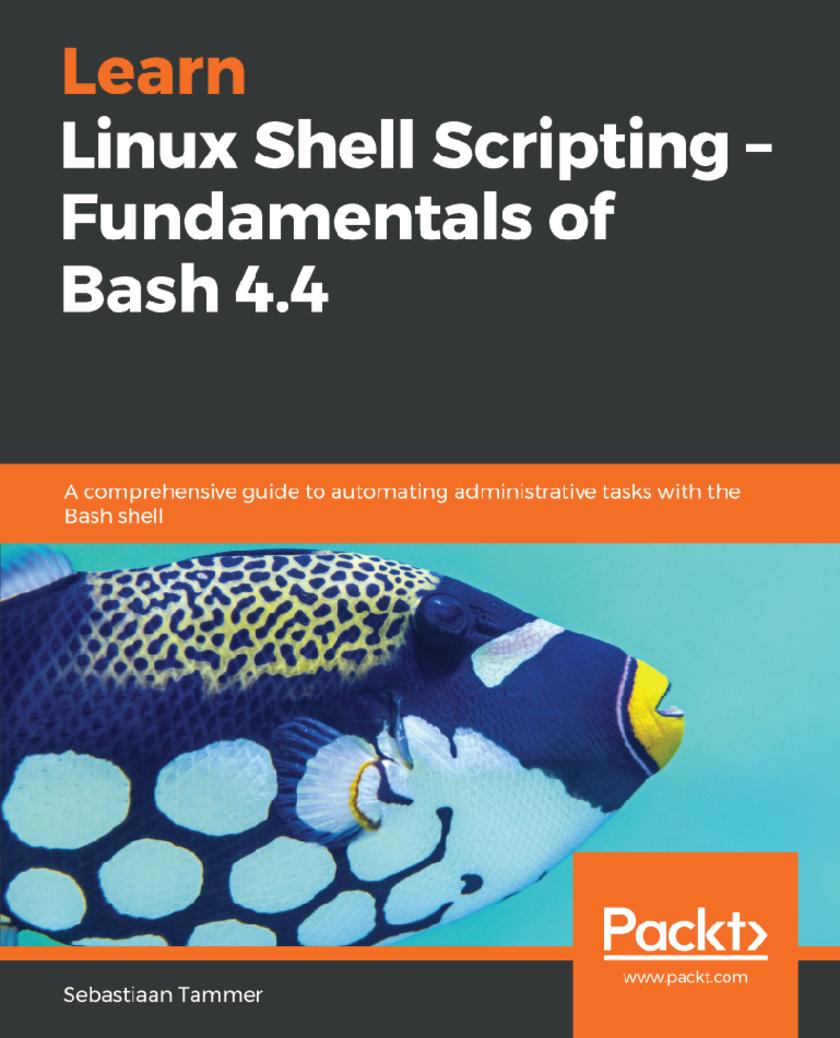
Learn Linux Shell Scripting – Fundamentals of Bash 4.4
¥71.93
Create and maintain powerful Bash scripts for automation and administration. Key Features *Get up and running with Linux shell scripting using real-world examples *Leverage command-line techniques and methodologies to automate common yet complex administration tasks *A practical guide with exposure to scripting constructs and common scripting patterns Book Description Shell scripts allow us to program commands in chains and have the system execute them as a scripted event, just like batch files. This book will start with an overview of Linux and Bash shell scripting, and then quickly deep dive into helping you set up your local environment, before introducing you to tools that are used to write shell scripts. The next set of chapters will focus on helping you understand Linux under the hood and what Bash provides the user. Soon, you will have embarked on your journey along the command line. You will now begin writing actual scripts instead of commands, and will be introduced to practical applications for scripts. The final set of chapters will deep dive into the more advanced topics in shell scripting. These advanced topics will take you from simple scripts to reusable, valuable programs that exist in the real world. The final chapter will leave you with some handy tips and tricks and, as regards the most frequently used commands, a cheat sheet containing the most interesting flags and options will also be provided. After completing this book, you should feel confident about starting your own shell scripting projects, no matter how simple or complex the task previously seemed. We aim to teach you how to script and what to consider, to complement the clear-cut patterns that you can use in your daily scripting challenges. What you will learn *Understand Linux and Bash basics as well as shell scripting fundamentals *Learn to write simple shell scripts that interact with Linux operating system *Build, maintain, and deploy scripts in a Linux environment *Learn best practices for writing shell scripts *Avoid common pitfalls associated with Bash scripting *Gain experience and the right toolset to write your own complex shell scripts Who this book is for This book targets new and existing Linux system administrators, Windows system administrators or developers who are interested in automating administrative tasks. No prior shell scripting experience is needed but in case you do this book will make a pro quickly. Readers should have a basic understanding of the command line.
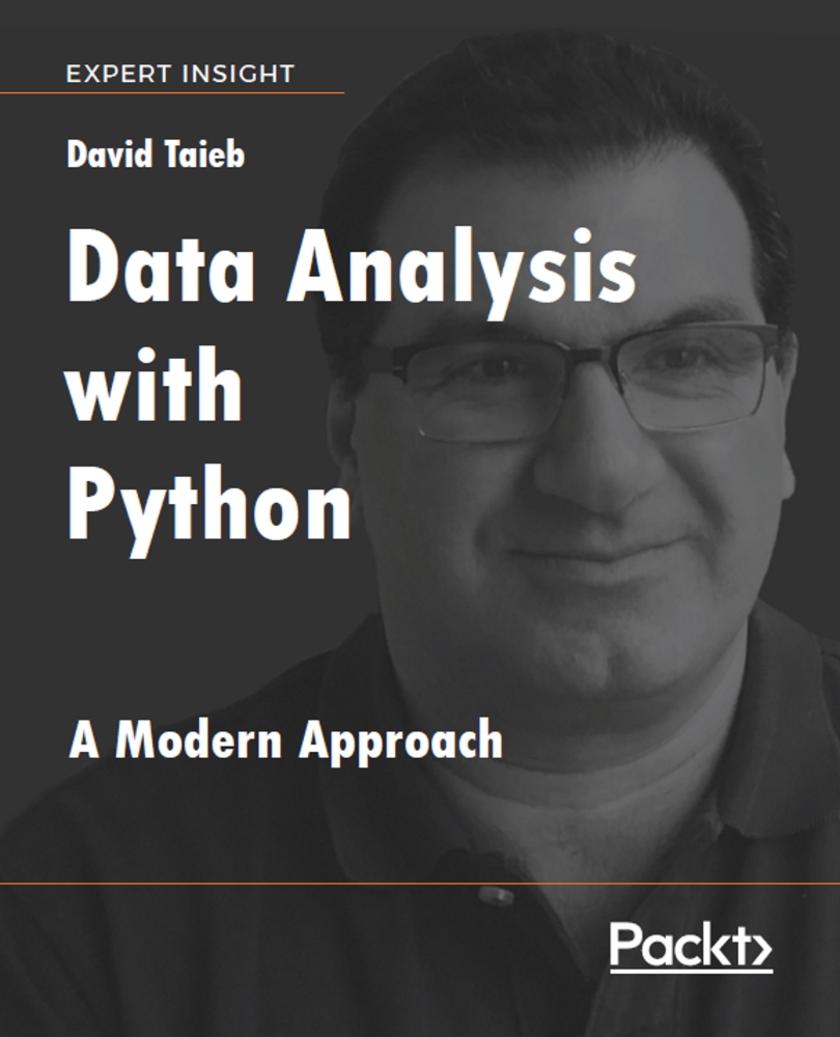
Data Analysis with Python
¥71.93
Learn a modern approach to data analysis using Python to harness the power of programming and AI across your data. Detailed case studies bring this modern approach to life across visual data, social media, graph algorithms, and time series analysis. Key Features *Bridge your data analysis with the power of programming, complex algorithms, and AI *Use Python and its extensive libraries to power your way to new levels of data insight *Work with AI algorithms, TensorFlow, graph algorithms, NLP, and financial time series *Explore this modern approach across with key industry case studies and hands-on projects Book Description Data Analysis with Python offers a modern approach to data analysis so that you can work with the latest and most powerful Python tools, AI techniques, and open source libraries. Industry expert David Taieb shows you how to bridge data science with the power of programming and algorithms in Python. You'll be working with complex algorithms, and cutting-edge AI in your data analysis. Learn how to analyze data with hands-on examples using Python-based tools and Jupyter Notebook. You'll find the right balance of theory and practice, with extensive code files that you can integrate right into your own data projects. Explore the power of this approach to data analysis by then working with it across key industry case studies. Four fascinating and full projects connect you to the most critical data analysis challenges you’re likely to meet in today. The first of these is an image recognition application with TensorFlow – embracing the importance today of AI in your data analysis. The second industry project analyses social media trends, exploring big data issues and AI approaches to natural language processing. The third case study is a financial portfolio analysis application that engages you with time series analysis - pivotal to many data science applications today. The fourth industry use case dives you into graph algorithms and the power of programming in modern data science. You'll wrap up with a thoughtful look at the future of data science and how it will harness the power of algorithms and artificial intelligence. What you will learn *A new toolset that has been carefully crafted to meet for your data analysis challenges *Full and detailed case studies of the toolset across several of today’s key industry contexts *Become super productive with a new toolset across Python and Jupyter Notebook *Look into the future of data science and which directions to develop your skills next Who this book is for This book is for developers wanting to bridge the gap between them and data scientists. Introducing PixieDust from its creator, the book is a great desk companion for the accomplished Data Scientist. Some fluency in data interpretation and visualization is assumed. It will be helpful to have some knowledge of Python, using Python libraries, and some proficiency in web development.
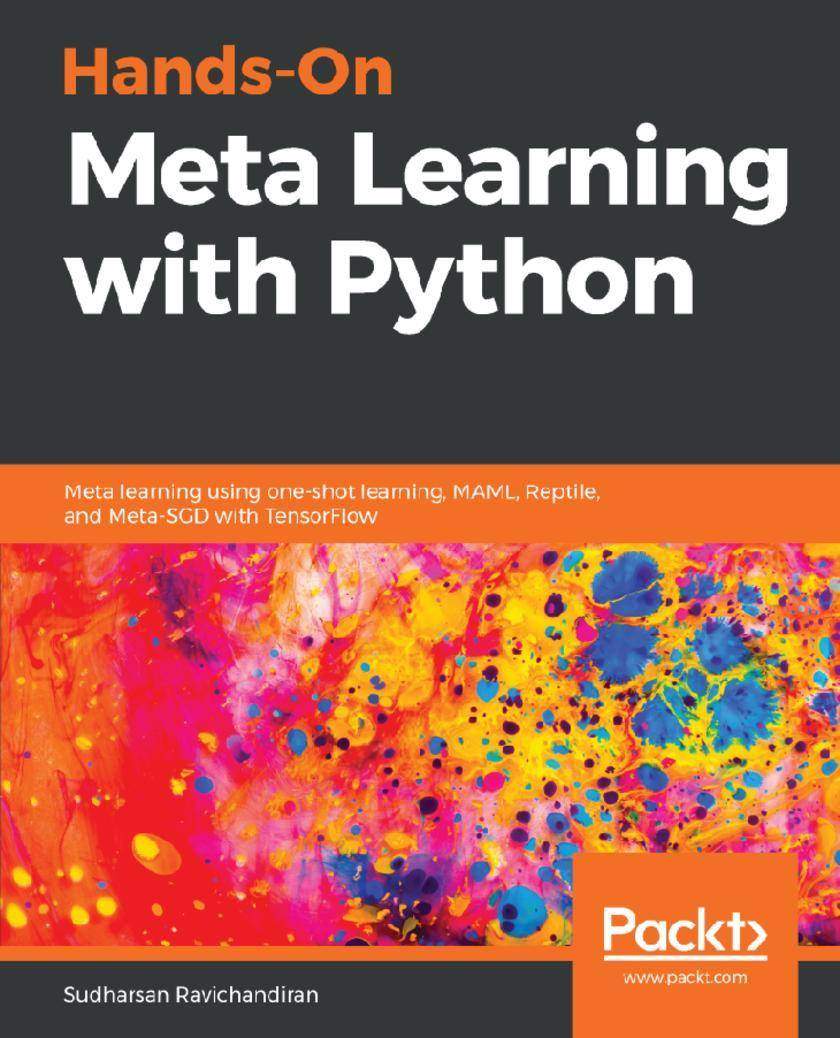
Hands-On Meta Learning with Python
¥71.93
Explore a diverse set of meta-learning algorithms and techniques to enable human-like cognition for your machine learning models using various Python frameworks Key Features *Understand the foundations of meta learning algorithms *Explore practical examples to explore various one-shot learning algorithms with its applications in TensorFlow *Master state of the art meta learning algorithms like MAML, reptile, meta SGD Book Description Meta learning is an exciting research trend in machine learning, which enables a model to understand the learning process. Unlike other ML paradigms, with meta learning you can learn from small datasets faster. Hands-On Meta Learning with Python starts by explaining the fundamentals of meta learning and helps you understand the concept of learning to learn. You will delve into various one-shot learning algorithms, like siamese, prototypical, relation and memory-augmented networks by implementing them in TensorFlow and Keras. As you make your way through the book, you will dive into state-of-the-art meta learning algorithms such as MAML, Reptile, and CAML. You will then explore how to learn quickly with Meta-SGD and discover how you can perform unsupervised learning using meta learning with CACTUs. In the concluding chapters, you will work through recent trends in meta learning such as adversarial meta learning, task agnostic meta learning, and meta imitation learning. By the end of this book, you will be familiar with state-of-the-art meta learning algorithms and able to enable human-like cognition for your machine learning models. What you will learn *Understand the basics of meta learning methods, algorithms, and types *Build voice and face recognition models using a siamese network *Learn the prototypical network along with its variants *Build relation networks and matching networks from scratch *Implement MAML and Reptile algorithms from scratch in Python *Work through imitation learning and adversarial meta learning *Explore task agnostic meta learning and deep meta learning Who this book is for Hands-On Meta Learning with Python is for machine learning enthusiasts, AI researchers, and data scientists who want to explore meta learning as an advanced approach for training machine learning models. Working knowledge of machine learning concepts and Python programming is necessary.

UX Design for Mobile
¥71.93
Get proficient in building beautiful and appealing mobile interfaces (UI) with this complete mobile user experience (UX) design guide. About This Book ? Quickly explore innovative design solutions based on the real needs of your users. ? Create low and high fidelity prototypes using some of the best tools. ? Master a pragmatic design process to create successful products. ? Plan an app design from scratch to final test, with real users. Who This Book Is For This book is for designers, developers and product managers interested in creating successful apps. Readers will be provided with a process to produce, test and improve designs based on best practices. What You Will Learn ? Plan an app design from scratch to final test, with real users. ? Learn from leading companies and find working patterns. ? Apply best UX design practices to your design process. ? Create low and high fidelity prototypes using some of the best tools. ? Follow a step by step examples for Tumult Hype and Framer Studio. ? Test your designs with real users, early in the process. ? Integrate the UX Designer profile into a working team. In Detail User experience (UX) design provides techniques to analyze the real needs of your users and respond to them with products that are delightful to use. This requires you to think differently compared to traditional development processes, but also to act differently. In this book, you will be introduced to a pragmatic approach to exploring and creating mobile app solutions, reducing risks and saving time during their construction. This book will show you a working process to quickly iterate product ideas with low and high fidelity prototypes, based on professional tools from different software brands. You will be able to quickly test your ideas early in the process with the most adequate prototyping approach. You will understand the pros and cons of each approach, when you should use each of them, and what you can learn in each step of the testing process. You will also explore basic testing approaches and some more advanced techniques to connect and learn from your users. Each chapter will focus on one of the general steps needed to design a successful product according to the organization goals and the user needs. To achieve this, the book will provide detailed hands-on pragmatic techniques to design innovative and easy to use products. You will learn how to test your ideas in the early steps of the design process, picking up the best ideas that truly work with your users, rethinking those that need further refinement, and discarding those that don’t work properly in tests made with real users. By the end of the book, you will learn how to start exploring and testing your design ideas, regardless the size of the design budget. Style and approach A quick and simple guide to design and test a mobile application from the UX design point of view
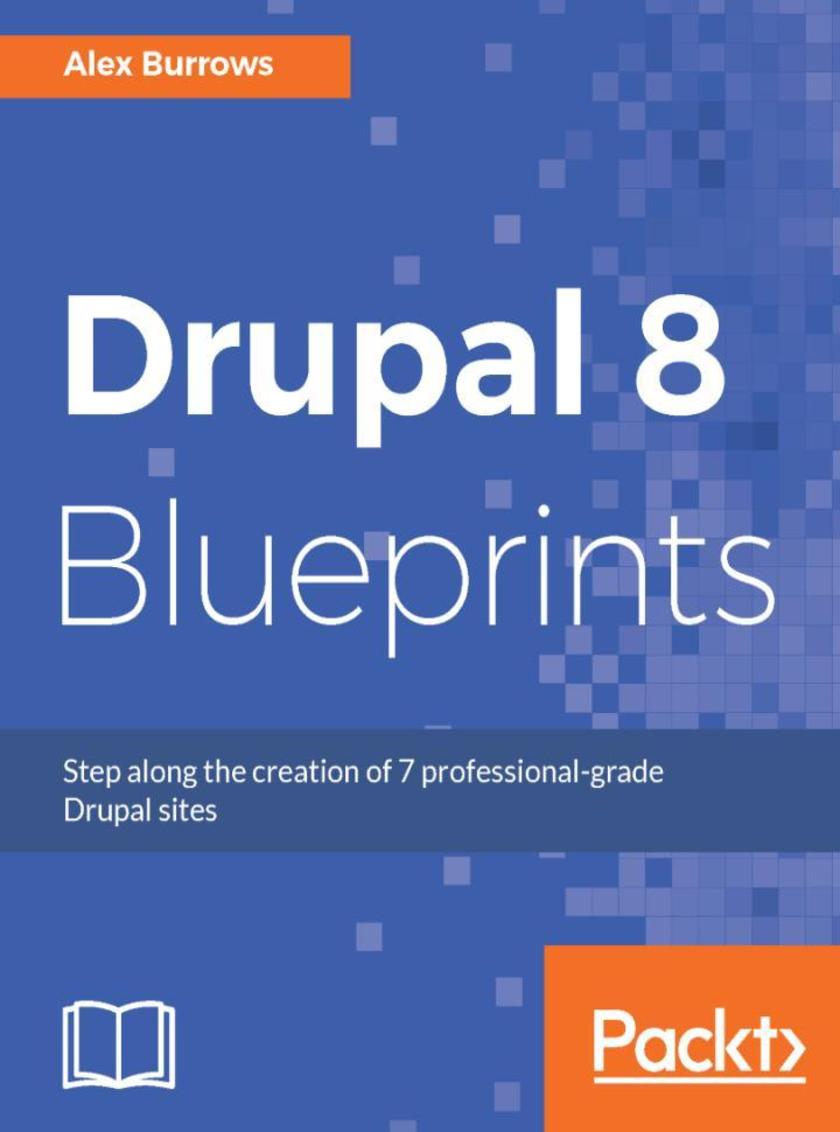
Drupal 8 Blueprints
¥71.93
A project-based guide that will show you how to create 7 professional Drupal sites About This Book ? Create and design your own customized website effortlessly and efficiently ? This up-to-date guide on Drupal 8 will show you how you can leverage the latest Drupal 8 features ? This hands-on guide will turn you into a professional grade Drupal 8 developer through 7 unique and engaging web sites Who This Book Is For This book is ideal for web developers who are looking to create professional web applications using Drupal 8. You should have some previous experience with Drupal and must have a basic knowledge of web application development in general. If you are looking to create fluent professional websites that will take you to the next level, then this book is for you. What You Will Learn ? Find out how to use the Drupal 8 core functionality to build great websites ? Discover how to better manage content using custom blocks and views ? Display content in multiple ways, taking advantage of display modes ? Using the new TWIG theme engine for Drupal ? Easily manage and filter content ? Understanding best practices for building great Drupal sites ? Move beyond Drupal to build headless websites using RESTful services and JavaScript frameworks In Detail Drupal is an open source content management framework that can be used for developing websites and simplifying online management of content for users. This book is a must-have for web developers who are looking to create professional-grade websites using Drupal 8. While building 7 different Drupal websites, we will focus on implementing the out of the box features that come with Drupal 8 and see how we can make some complex sites with minimal custom code. Focusing completely on Drupal 8, this book will help you leverage the new Drupal 8 features such as creating a different types and layouts of content using configuration to build in core with its built-in web services facilities, and effortless authoring using the new CKEditor with an effortless and efficient industry standard approach. The book starts with getting started with the development environment of Drupal. Each chapter will start with a brief overview of the site to be built and the required features. Then, we will proceed to create customized modules and themes and integrate third-party plugins. Lastly, you will learn about "headless" Drupal that uses RESTful services that would help you to display content outside of Drupal By the end of the book, you will be able to implement the knowledge gained to build your own custom websites using Drupal 8. Style and approach This unique, project-based resource on Drupal 8 website development will show you how to leverage Drupal 8’s features to create customized, professional-grade applications efficiently and effectively.
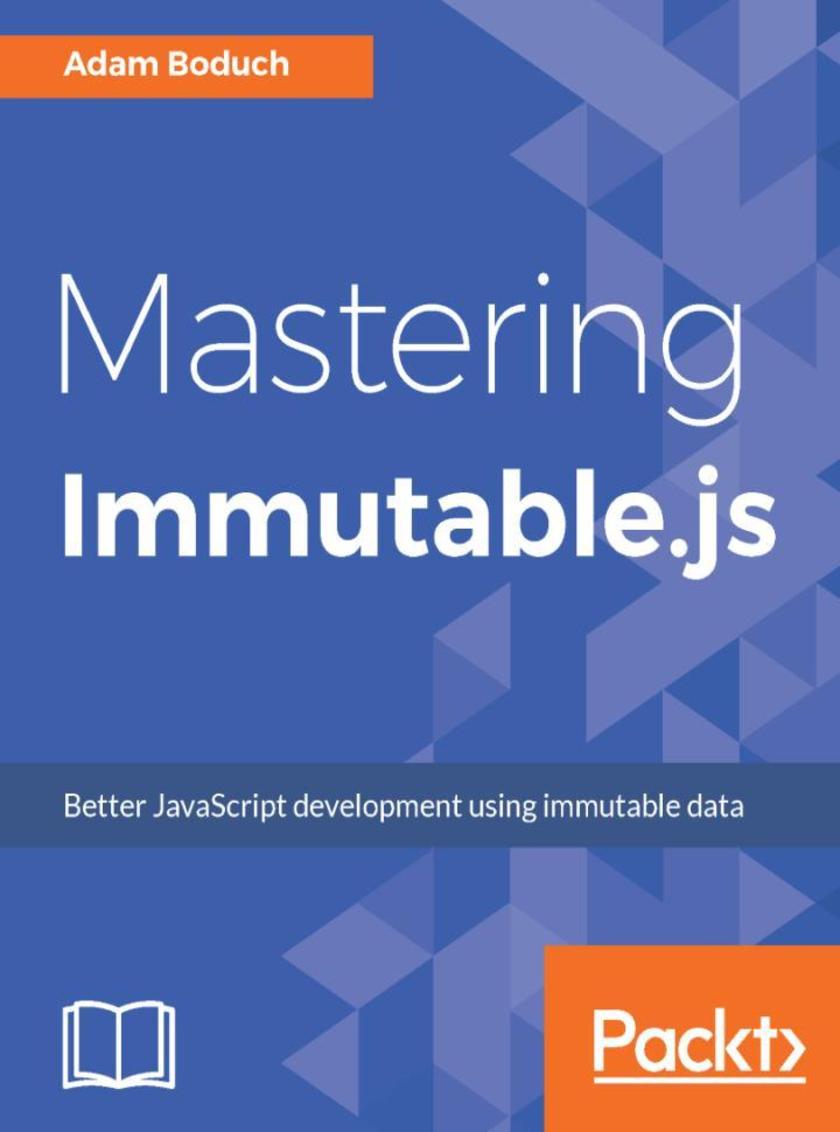
Mastering Immutable.js
¥71.93
This book shows JavaScript developers how to build highly dependable JavaScript projects using the Immutable.js framework. About This Book ? Master the Immutable.js JavaScript framework ? Build predictable and dependable applications using immutability ? Control how data flows through your application ? Control the effects of data flow in your user interface using Node.js Who This Book Is For This book is for JavaScript developers, from intermediate level and beyond, who need to create dependable JavaScript projects, using the Immutable.js JavaScript framework. What You Will Learn ? Learn how Immutable.js can improve the dependability of your JavaScript code ? Discover how to create Immutable data, and work with persistent changes ? See how to combine and filter collections, and find items ? Learn how to work with sequences and side effects ? Sort collections, maps, and sets ? Get to know tricks to avoid processing chains ? Compare and move between lists, sets, and maps ? Work with Immutable patterns and Immutable architecture In Detail Immutable.js is a JavaScript library that will improve the robustness and dependability of your larger JavaScript projects. All aspects of the Immutable.js framework are covered in this book, and common JavaScript situations are examined in a hands-on way so that you gain practical experience using Immutable.js that you can apply across your own JavaScript projects. The key to building robust JavaScript applications using immutability is to control how data flows through your application, and how the side-effects of these flows are managed. Many problems that are difficult to pinpoint in large codebases stem from data that’s been mutated where it shouldn’t have been. With immutable data, you rule out an entire class of bugs. Mastering Immutable.js takes a practical, hands-on approach throughout, and shows you the ins and outs of the Immutable.js framework so that you can confidently build successful and dependable JavaScript projects. Style and Approach Adam Boduch covers all the key concepts and benefits of immutability, and then presents you with hands-on practical experience on implementing immutability in your JavaScript projects.
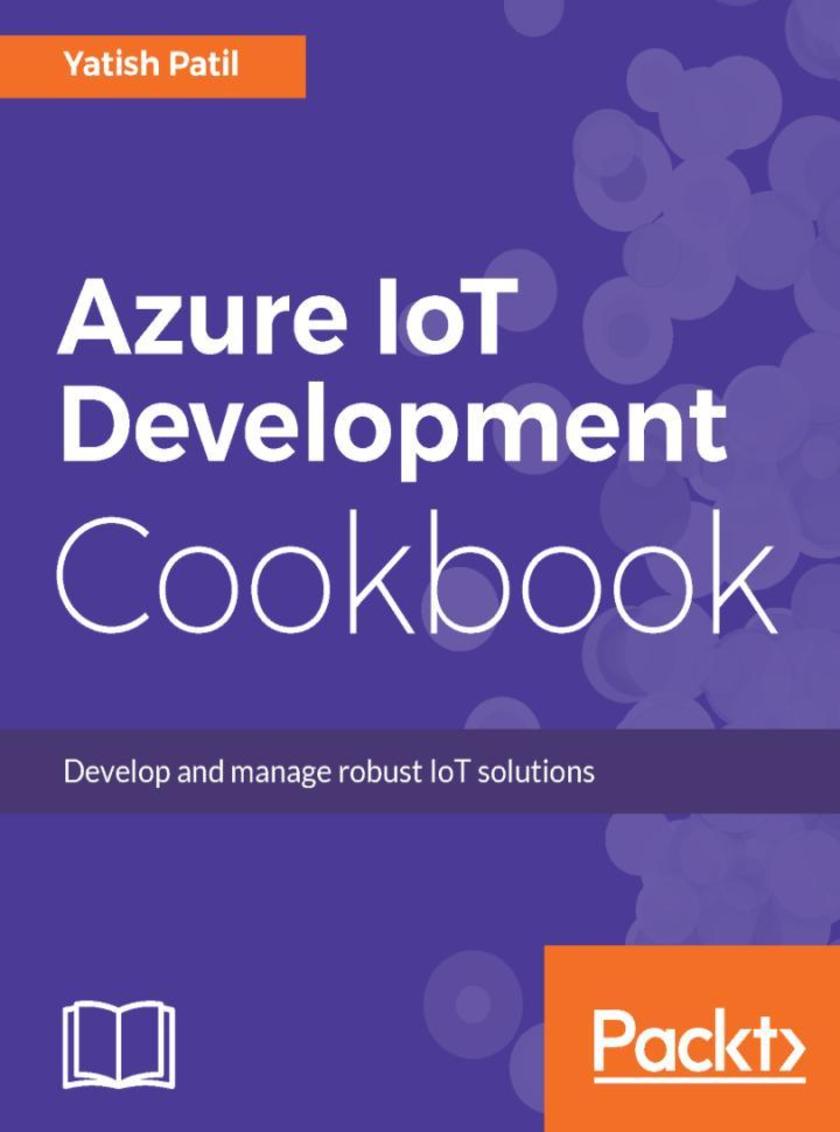
Azure IoT Development Cookbook
¥71.93
Over 50 recipes to drive IoT innovation with Microsoft Azure About This Book ? Build secure and scalable IoT solutions with Azure IoT platform ? Learn techniques to build end to end IoT solutions leveraging the Azure IoT platform ? Filled with practical recipes to help you increase connectivity and automation across IoT devices Who This Book Is For If you are an application developer and want to build robust and secure IoT solution for your organization using Azure IoT, then this book is for you. What You Will Learn ? Build IoT Solutions using Azure IoT & Services ? Learn device configuration and communication protocols ? Understand IoT Suite and Pre-configured solutions ? Manage Secure Device communications ? Understand Device management, alerts ? Introduction with IoT Analytics, reference IoT Architectures ? Reference Architectures from Industry ? Pre-Configured IoT Suite solutions In Detail Microsoft’s end-to-end IoT platform is the most complete IoT offering, empowering enterprises to build and realize value from IoT solutions efficiently. It is important to develop robust and reliable solutions for your organization to leverage IoT services. This book focuses on how to start building custom solutions using the IoT hub or the preconfigured solution of Azure IoT suite. As a developer, you will be taught how to connect multiple devices to the Azure IoT hub, develop, manage the IoT hub service and integrate the hub with cloud. We will be covering REST APIs along with HTTP, MQTT and AMQP protocols. It also helps you learn Pre-Configured IoT Suite solution. Moving ahead we will be covering topics like:-Process device-to-cloud messages and cloud-to-device messages using .Net-Direct methods and device management-Query Language, Azure IoT SDK for .Net-Creating and managing, Securing IoT hub, IoT Suite and many more. We will be using windows 10 IoT core, Visual Studio, universal Windows platform. At the end, we will take you through IoT analytics and provide a demo of connecting real device with Azure IoT. Style and approach A set of exciting recipes of using Microsoft Azure IoT more effectively.
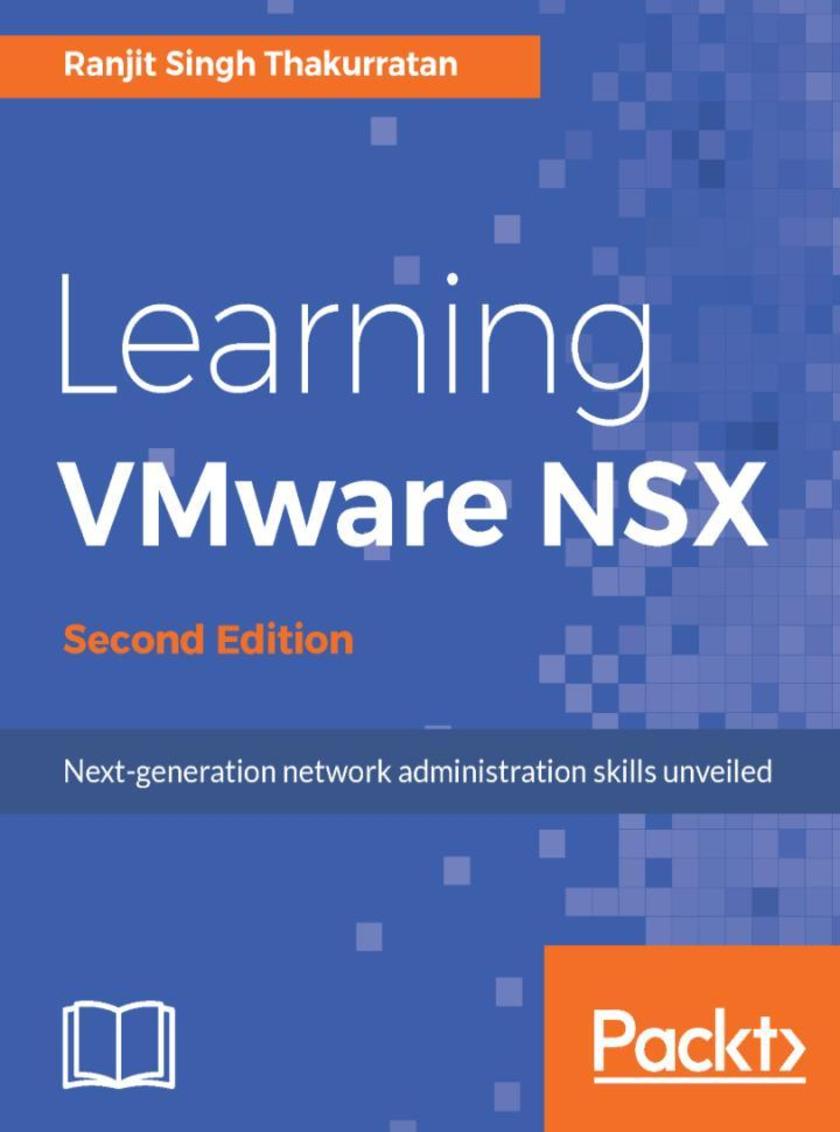
Learning VMware NSX - Second Edition
¥71.93
Explore the foundational components of VMware NSX About This Book ? Install, manage, monitor and configure your NSX deployment. ? Understand VMware NSX's components and discover best practices to help you manage VMware NSX ? A step by step guide that will help you elevate your skills in deploying NSX to your environment Who This Book Is For The book is intended for network and system administrators that have hands on experience with VMware vSphere suite of products and would like to learn more about software defined networking and implementation of NSX. The readers are also expected to have basic networking knowledge and aware of basic switching and routing fundamentals. What You Will Learn ? Understand software-defined networks ? Deploy and configure VXLAN-enabled logical switches ? Secure your environment using Distributed Firewall and Data Security ? Configure third-party services in NSX ? Manage, configure, and deploy edge gateway services ? Perform various Edge operations including configuring CA certificates ? Explore the different monitoring options to check their traffic flow In Detail VMware NSX is a platform for the software-defined data center. It allows complex networking topologies to be deployed programmatically in seconds. SDNs allow ease of deployment, management, and automation in deploying and maintaining new networks while reducing and in some cases completely eliminating the need to deploy traditional networks. The book allows you a thorough understanding of implementing Software defined networks using VMware’s NSX. You will come across the best practices for installing and configuring NSX to setup your environment. Then you will get a brief overview of the NSX Core Components NSX’s basic architecture. Once you are familiar with everything, you will get to know how to deploy various NSX features. Furthermore, you will understand how to manage and monitor NSX and its associated services and features. In addition to this, you will also explore the best practices for NSX deployments. By the end of the book, you will be able to deploy Vmware NSX in your own environment with ease. This book can come handy if you are preparing for VMware NSX certification. Style and approach This is an easy-to-follow guide with tested configuration steps to get you up and running quickly. This book covers the nitty-gritty of installing, configuring, managing, and monitoring VMware NSX.
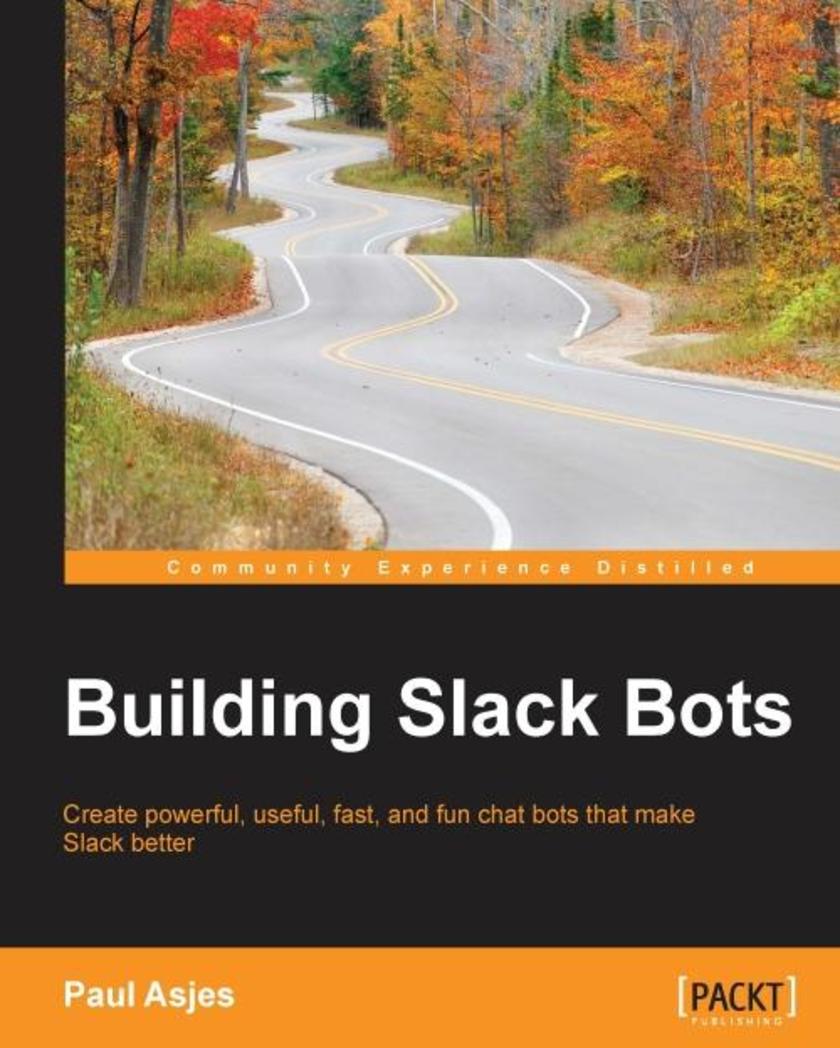
Building Slack Bots
¥71.93
Create powerful, useful, fast, and fun chat bots that make Slack better About This Book This is the first developer's guide to programming for Slack It covers everything you need to create chat bots for Slack’s conversational UI It’s full of realistic examples, usable code, and lucid explanations on everything you need to know Who This Book Is For This is a book for software developers who want to build Slack bots for their own company’s use or for customers. You need to know JavaScript. What You Will Learn Receive and send messages sent in Slack Respond to user commands Process natural language Perform useful tasks on commands such as fetching data from external sources Use webhooks and slash commands Create a Google Classroom and add customized information for each individual class In Detail Slack promises that its users will "be less busy." Slack bots interact with users in Slack chatrooms, providing useful immediate information, and automating work. This book gives you everything you need to build powerful and useful Slack bots. You’ll see how to hook into the Slack API to create software that can read and post to chatrooms, respond to commands and hints given in natural conversational language, and build fun and useful bots for your own place of work, both as a front end to your own service and to distribute and share as apps. You can even sell your bots and build a business as a Slack bot developer. Throughout the book, you’ll build useful and fun example applications that you can modify for your own situations. These range from simple, fun applications to liven up discussions to useful, data-driven apps to help you make decisions quickly and manage work. Style and approach This is a friendly step-by-step guide to building powerful, friendly Slack bots.
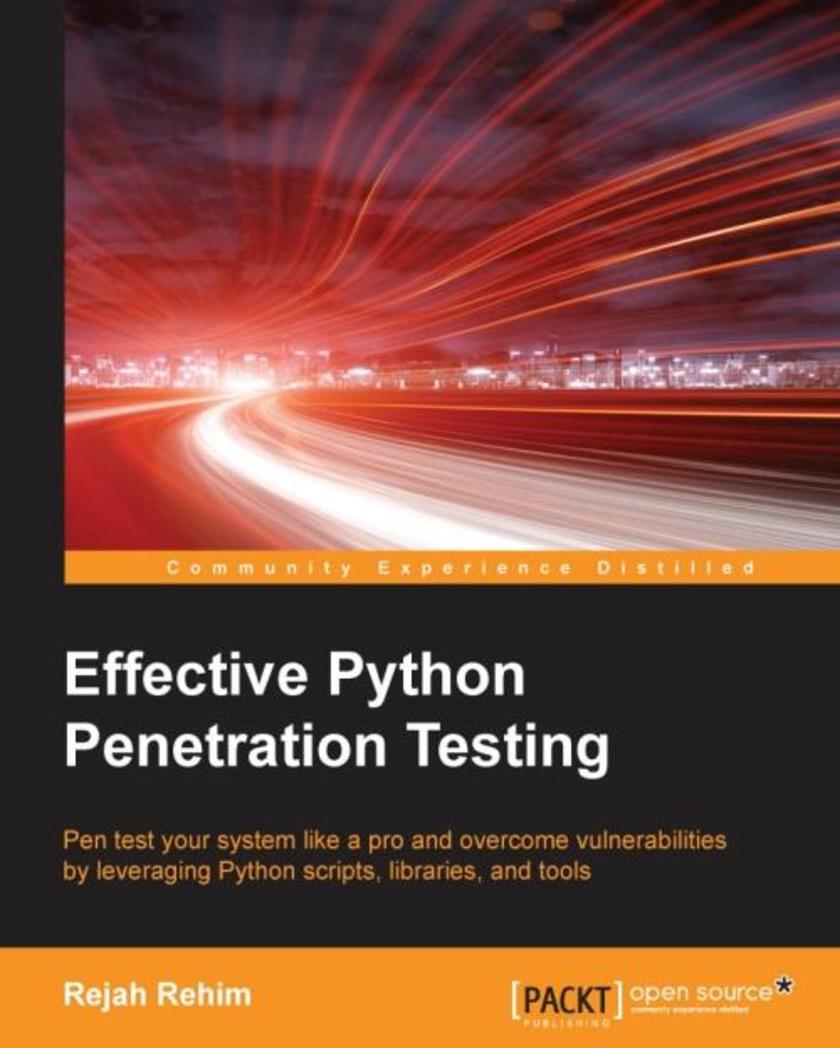
Effective Python Penetration Testing
¥71.93
Pen test your system like a pro and overcome vulnerabilities by leveraging Python *s, libraries, and tools About This Book Learn to utilize your Python *ing skills to pentest a computer system, network, and web-application Get proficient at the art of assessing vulnerabilities by conducting effective penetration testing This is the ultimate guide that teaches you how to use Python to protect your systems against sophisticated cyber attacks Who This Book Is For This book is ideal for those who are comfortable with Python or a similar language and need no help with basic programming concepts, but want to understand the basics of penetration testing and the problems pentesters face. What You Will Learn Write Scapy *s to investigate network traffic Get to know application fingerprinting techniques with Python Understand the attack *ing techniques Write fuzzing tools with pentesting requirements Learn basic attack *ing methods Utilize cryptographic toolkits in Python Automate pentesting with Python tools and libraries In Detail Penetration testing is a practice of testing a computer system, network, or web application to find weaknesses in security that an attacker can exploit. Effective Python Penetration Testing will help you utilize your Python *ing skills to safeguard your networks from cyberattacks. We will begin by providing you with an overview of Python *ing and penetration testing. You will learn to analyze network traffic by writing Scapy *s and will see how to fingerprint web applications with Python libraries such as ProxMon and Spynner. Moving on, you will find out how to write basic attack *s, and will develop debugging and reverse engineering skills with Python libraries. Toward the end of the book, you will discover how to utilize cryptography toolkits in Python and how to automate Python tools and libraries. Style and approach This is an expert’s guide to Python with a practical based approach, where each chapter will help you improve your penetration testing skills using Python to become a master pen tester.
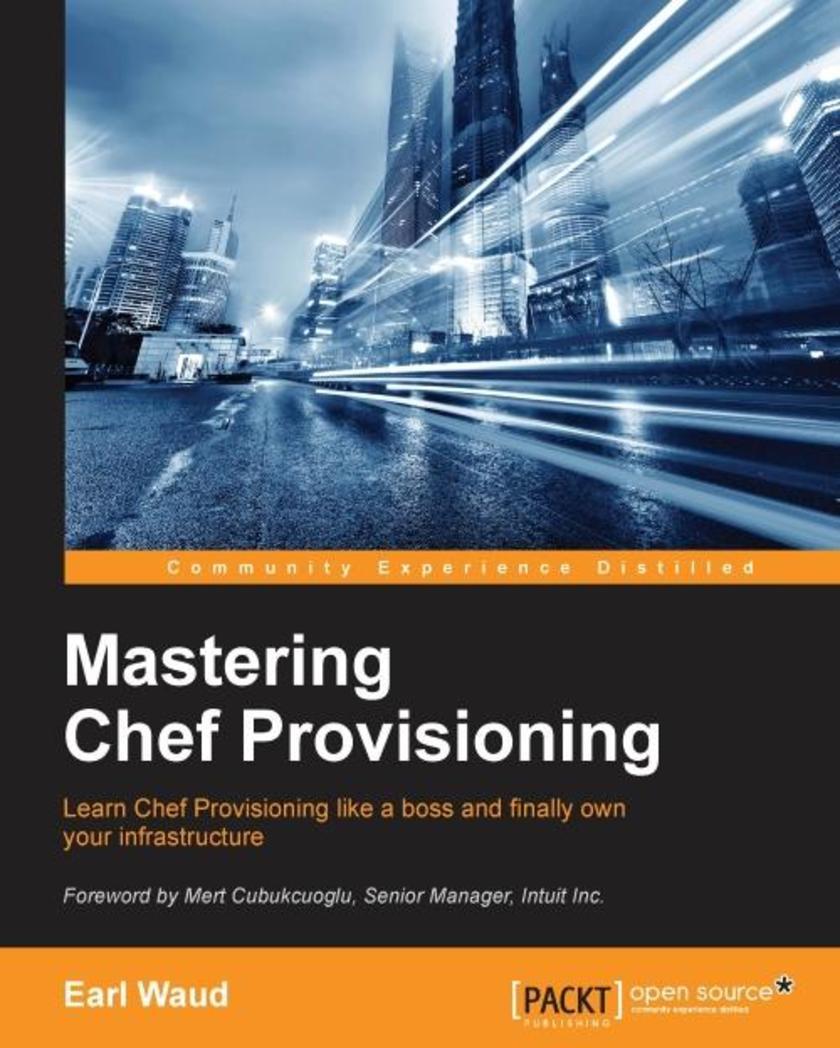
Mastering Chef Provisioning
¥71.93
Learn Chef Provisioning like a boss and finally own your infrastructure About This Book This is the first Chef book focused on provisioning infrastructure as its sole task. The book offers a clear solution to a specific pain point: learn to make your system work faster. Learning better approaches to load balancing and parallelization with this book will save you time By mastering the techniques in this book, you will know how to run an entire fleet of machines without breaking a sweat This book is more helpful than the documentation ( https://docs.chef.io/provisioning.html), with a stronger guiding voice and clearer explanations and use cases Who This Book Is For This book is for Software Engineers, System Administrators, or DevOps Engineers who need to quickly deliver reliably consistent infrastructure at scale. You are expected to have intermediate experience with Chef and Ruby and will be reading this book to advance your knowledge and take your skillset to the next level. What You Will Learn Use best practices to describe your entire infrastructure as code Automate and document every aspect of your network, from the hardware of individual nodes to software, middleware, and all containers and clouds Create a perfect model system Make the best possible use of your resources and avoid redundancy Deliver on the promise of Infrastructure as Code Scale with ease by properly provisioning their infrastructure Use the best Test Driven Development methodologies In Detail This book will show you the best practices to describe your entire infrastructure as code. With the help of this book you can expand your knowledge of Chef because and implement robust and scalable automation solutions. You can automate and document every aspect of your network, from the hardware to software, middleware, and all your containers. You will become familiar with the Chef’s Chef Provisioning tool. You will be able to make a perfect model system where everything is represented as code beneath your fingertips. Make the best possible use of your resources, and deliver infrastructure as code, making it as versionable, testable and repeatable as application software Style and approach By dedicating a whole book solely to the question of provisioning, this book will teach administrators to use Chef as a birds-eye lens for their entire system. It will moves you away from the specifics of each machine and its automations and instead will teach you them how to approach the entire cluster as something different than the sum of its parts. By focusing on infrastructure as code as its own project, the book offers elegant, time-saving solutions for a perfectly described and automated network.
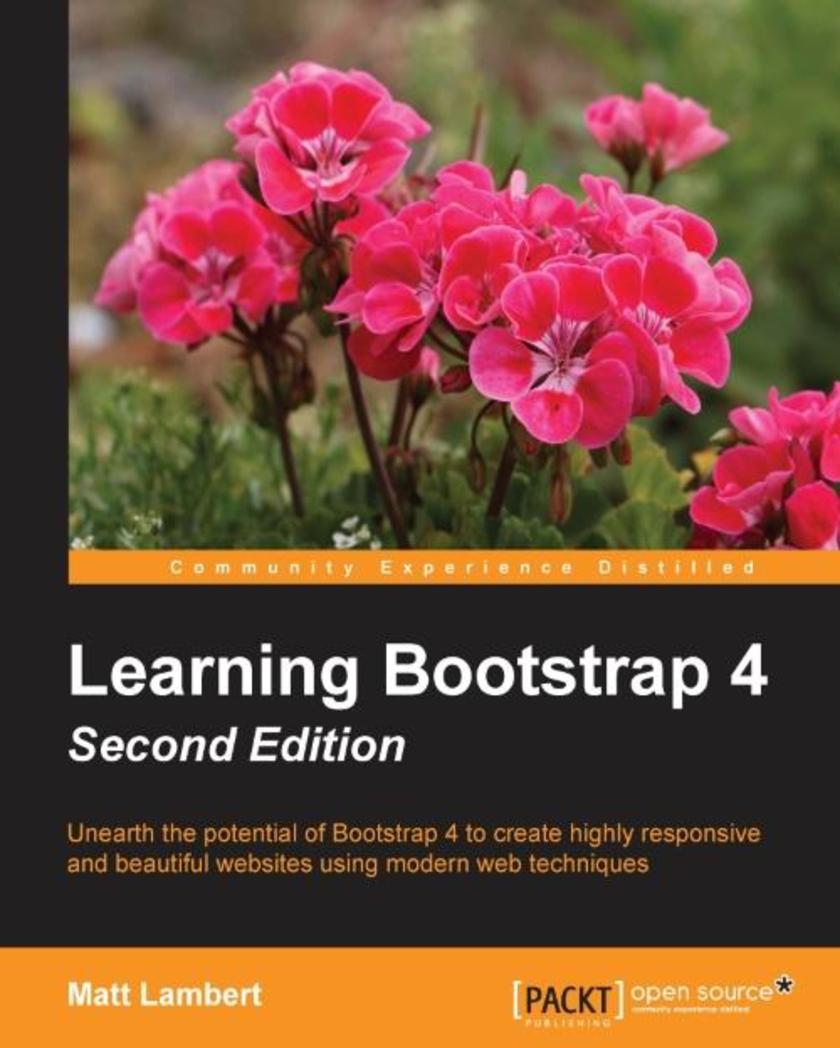
Learning Bootstrap 4 - Second Edition
¥71.93
Unearth the potential of Bootstrap 4 to create highly responsive and beautiful websites using modern web techniques About This Book This book shows how to take advantage of the all new features introduced in Bootstrap Learn responsive web design and discover how to build mobile-ready websites with ease Find out how to extend the capabilities of Bootstrap with a huge range of tools and plugins, including jQuery, Do more with JavaScript and learn how to create an enhanced user experience Who This Book Is For If you want to learn to build enterprise-level websites efficiently with Bootstrap, this book is for you. You must have a basic and fundamental understanding of HTML, CSS, and JavaScript; however, there is no need to have prior Bootstrap experience. What You Will Learn Fire up Bootstrap and set up the required build tools to get started See how and when to use Flexbox with the Bootstrap layouts Find out how to make your websites responsive, keeping in mind Mobile First design Work with content such as tables and figures Play around with the huge variety of components that Bootstrap offers Extend your build using plugins developed from JavaScript Use Sass to customize your existing themes In Detail Bootstrap, the most popular front-end framework built to design elegant, powerful, and responsive interfaces for professional-level web pages has undergone a major overhaul. Bootstrap 4 introduces a wide range of new features that make front-end web design even simpler and exciting. In this gentle and comprehensive book, we'll teach you everything that you need to know to start building websites with Bootstrap 4 in a practical way. You'll learn about build tools such as Node, Grunt, and many others. You'll also discover the principles of mobile-first design in order to ensure your pages can fit any screen size and meet the responsive requirements. Learn to play with Bootstrap's grid system and base CSS to ensure your designs are robust and that your development process is speedy and efficient. Then, you'll find out how you can extend your current build with some cool JavaScript Plugins, and throw in some Sass to spice things up and customize your themes. This book will make sure you're geared up and ready to build amazingly beautiful and responsive websites in a jiffy. Style and approach With the help of several real-world examples and code, this book will teach you to build a full-featured responsive website in Bootstrap, which is mobile-ready.
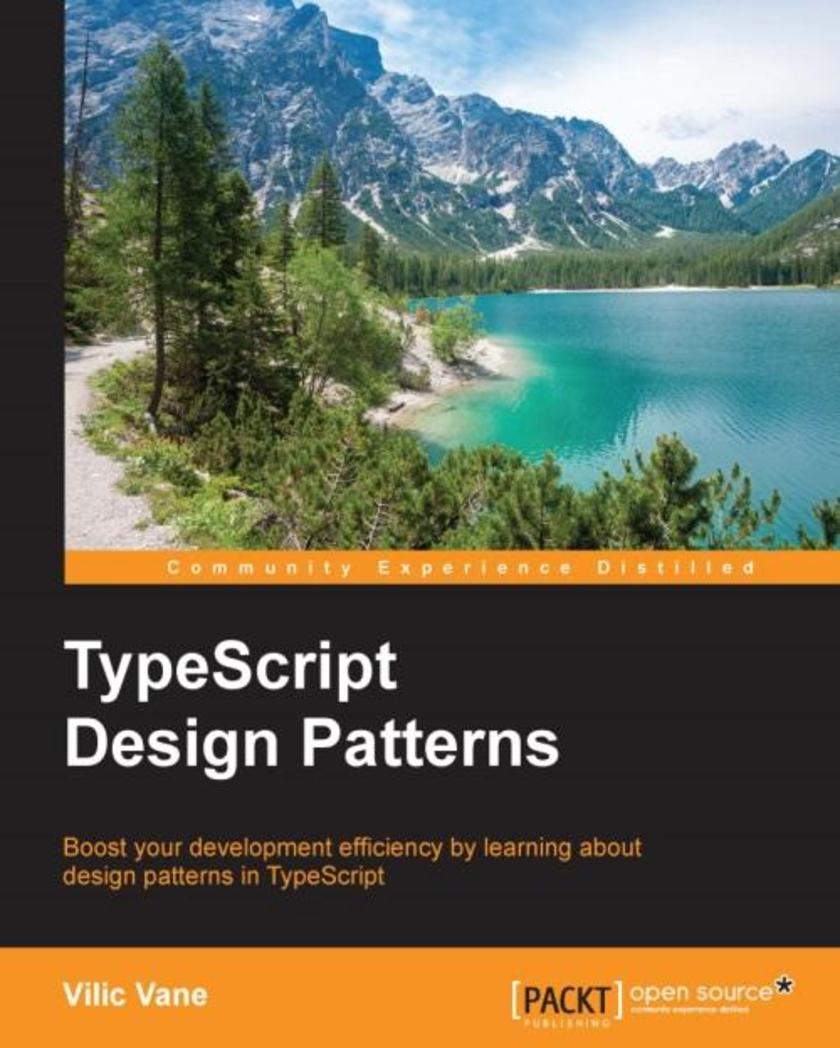
TypeScript Design Patterns
¥71.93
Boost your development efficiency by learning about design patterns in TypeScript About This Book This step-by-step guide will would demonstrate all the important design patterns in practice This book is the only documentation on the market focusing on design patterns in TypeScript This book is packed with rich examples that will improve your efficiency and encourage code reuse Who This Book Is For If you are a TypeScript developer, this book is for you. No knowledge of design patterns is required to read this book. What You Will Learn Understand the challenges and implications of developing an enterprise application Install and configure the necessary tools in order to start developing an application Identify the challenges when developing an application Apply GoF patterns in an application with a testing approach Use and utilize design patterns while developing a TypeScript application or during JavaScript application development Reference to SOLID principles and what their benefits do to your projects Apply various principles in a TypeScript application Improve code quality and development speed In Detail In programming, there are several problems that occur frequently. To solve these problems, there are various repeatable solutions that are known as design patterns. Design patterns are a great way to improve the efficiency of your programs and improve your productivity. This book is a collection of the most important patterns you need to improve your applications’ performance and your productivity. The journey starts by explaining the current challenges when designing and developing an application and how you can solve these challenges by applying the correct design pattern and best practices. Each pattern is accompanied with rich examples that demonstrate the power of patterns for a range of tasks, from building an application to code testing. We’ll introduce low-level programming concepts to help you write TypeScript code, as well as work with software architecture, best practices, and design aspects. Style and approach In this book, design patterns are explained in a step-by-step manner. All the major patterns covered will improve your understanding of TypeScript and the patterns associated with TypeScript.
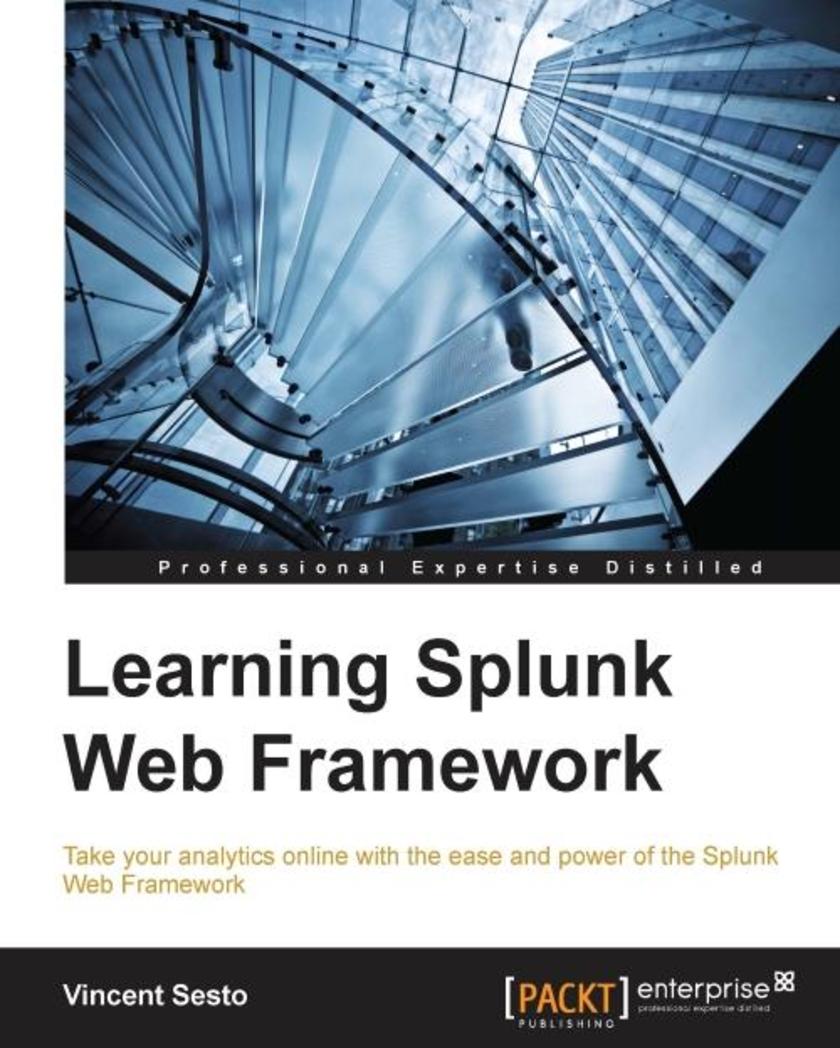
Learning Splunk Web Framework
¥71.93
Take your analytics online with the ease and power of the Splunk Web Framework About This Book Want to build rich applications on the Web using SplunkThis book will be your ultimate guide! Learn to use web framework components with the help of this highly practical, example-rich guide Perform excellent Splunk analytics on the Web and bring that knowledge to your own projects Who This Book Is For This book will cater to Splunk developers and administrators who now wish to further their knowledge with Splunk Web Framework and learn to improve the way they present and visualize data in Splunk. A basic knowledge of JavaScript will be beneficial but is not a prerequisite. What You Will Learn Master the fundamentals of Splunk Web Framework Start thinking of Splunk as a complete development platform to build user-friendly apps Extend the functionality of your apps using SimpleXML techniques Set up dashboard layouts, navigation, and menus in your apps Create simple dashboard elements including charts and tables Master the art of interacting with searches and dashboards Integrate SplunkJS to add visual appeal to your website In Detail Building rich applications on the Web using Splunk is now simpler than ever before with the Splunk Web Framework. It empowers developers to build their own web applications with custom dashboards, tables, charts, form searches, and other functionalities in the datasets at their disposal. The book will start with the fundamentals of the Splunk Web Framework, teaching you the secrets of building interesting and user-friendly applications. In the first application, you will learn to analyze and monitor traffic hitting the NASA website and learn to create dashboards for it. You will then learn additional, and more detailed, techniques to enhance the functionalities of the app such as dashboards and forms, editing simple XML, using simple XML extensions, tokens, post-process searches, dynamic drill-downs, the Splunk Web Framework and REST API, and much more. The second app will use historical stock market data and will create custom dashboards using Splunk Web Framework; the book will now cover important topics such as creating HTML dashboards, enhancing the visual appeal of the app using CSS, and moving your app with SplunkJS. The book will provide different and interesting examples instead of the usual “Log, Index, Search, and Graph” so that Splunk will be the first tool readers think of to resolve a problem. Style and approach This book will follow a step-by-step approach whereby every new concept is built on top of the previous chapter, and will be highly practical in nature; the reader will learn to build apps while reading about the Splunk Web framework.
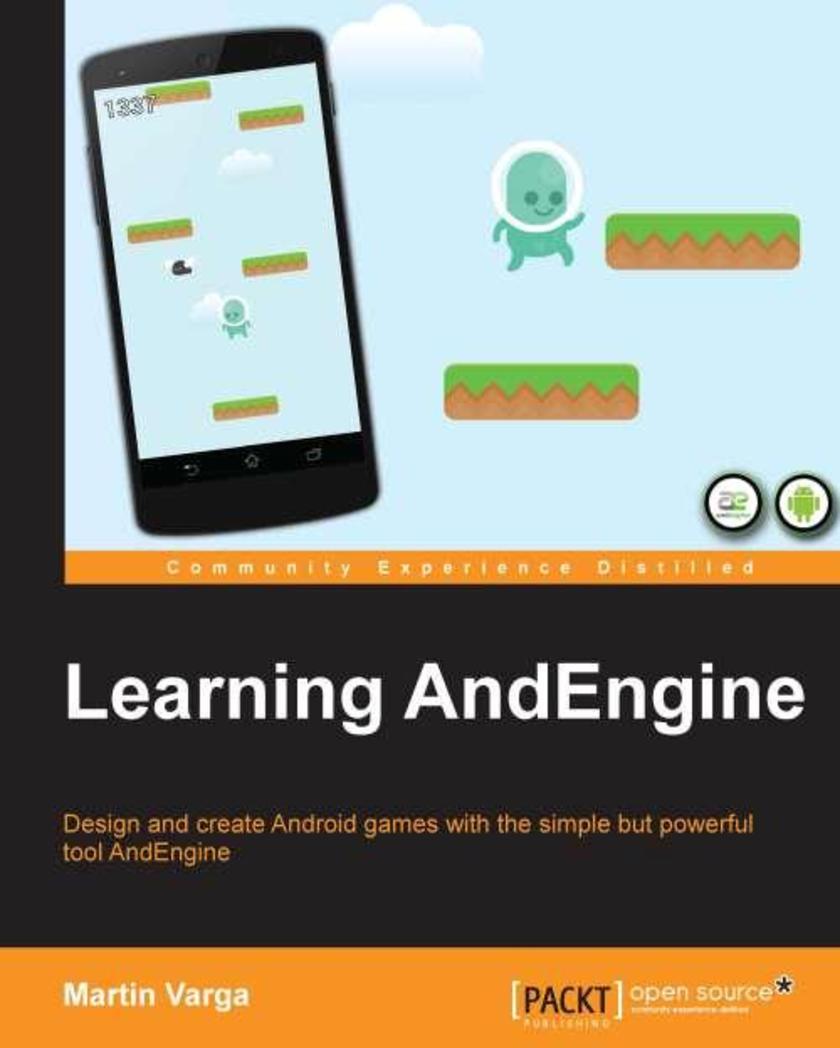
Learning AndEngine
¥71.93
If you are a beginner to AndEngine, or mobile game development in general, and you are looking for a simple way to start making games for Android, this book is for you. You should already know the basics of Java programming, but no previous game development experience is required.
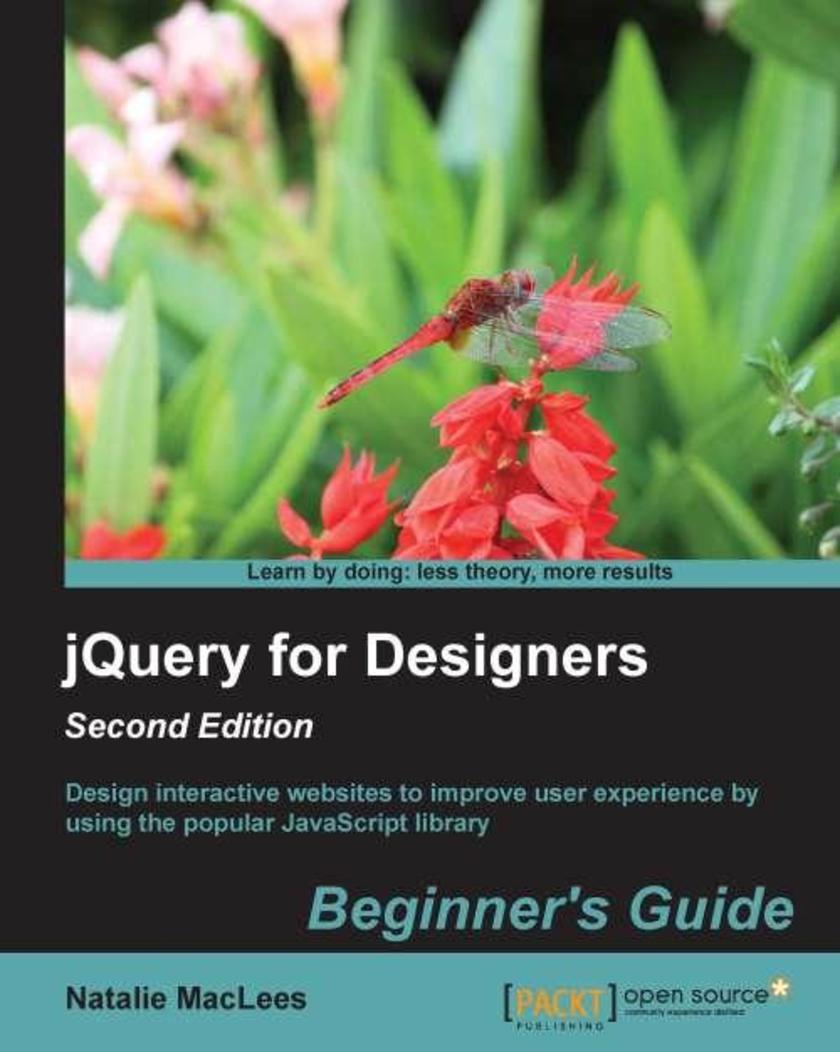
jQuery for Designers Beginner's Guide: Second Edition
¥71.93
A step-by-step guide that spices up your web pages and designs them in the way you want using the most widely used JavaScript library, jQuery. The beginner-friendly and easy-to-understand approach of the book will help get to grips with jQuery in no time. If you know the fundamentals of HTML and CSS, and want to extend your knowledge by learning to use JavaScript, then this is just the book for you. jQuery makes JavaScript straightforward and approachable – you'll be surprised at how easy it can be to add animations and special effects to your beautifully designed pages.




 购物车
购物车 个人中心
个人中心



